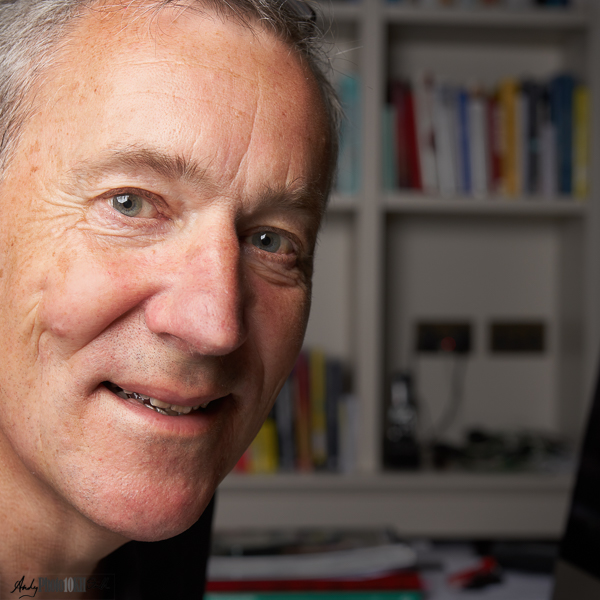
After 3½ years of elapsed time, and 5,000 hours of deliberate practice learning the art of photography, I’m theoretically at the half way point toward becoming a master photographer.
If you have any comments on this review, please post them below.
To see more posts on other photographic topics, or to follow my learning progress, please like or follow me on the social media channel of your choice in the sidebar to the right.
Half an Expert Photographer
This is an important post for ensuring that I’m following the project plan as originally defined, and monitoring, as quantitatively as possible, the progress I’m making.
Specifically the post addresses:
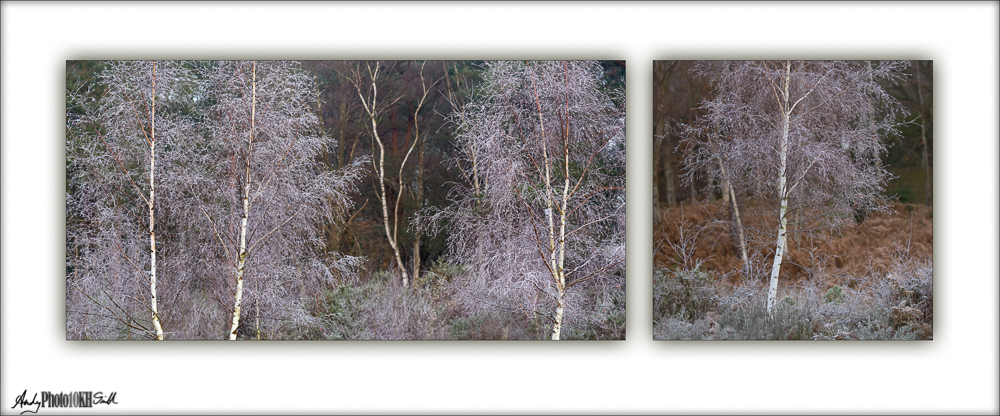
Example of a successful image
Scored 20 in the Stoke Poges Photographic Club’s competition on 2nd February 2021
Method
Approach to Learning
My “Why 10,000 Hours” page, written at the start of this project, outlines the theory of 10,000 hours deliberate practice being the minimum required to achieve mastery in any field of endeavour.
To follow this, apprenticeship model of skill acquisition, I have mainly adopted the strategies proposed by Robert Greene in his book “Mastery”. However, the other book which influenced my approach is “Creativity” by Mihaly Csikszentmihalyi, which discusses skill development in various fields and how the principals achieved creative breakthroughs.
Definition of Deliberate Practice
“Deliberate practice” is time spent purposefully trying to improve. This can cover a range of different activities, and was defined by me, in detail, at the start of this project under “What Counts” as:
- Shooting – including planning
- Processing – photographic post processing and entering competitions
- Review – primarily writing up in this journal
- Learning – everything from attending camera clubs, art exhibitions, to watching photography channels on YouTube.
Critically, I also included categories of work that didn’t count towards deliberate practice including:
- Travel
- Buying or fixing equipment of any sort
- Commercial discussions with potential clients
- Photography which is repetitive or otherwise not challenging me to constantly improve.
Apprenticeship Model
Sir Issac Newton famously said: “If I have seen further it is by standing on the shoulders of Giants.” This is the basis of the apprenticeship model, i.e., learn from one or more current master, copy their skills and style before even attempting to develop a unique style.
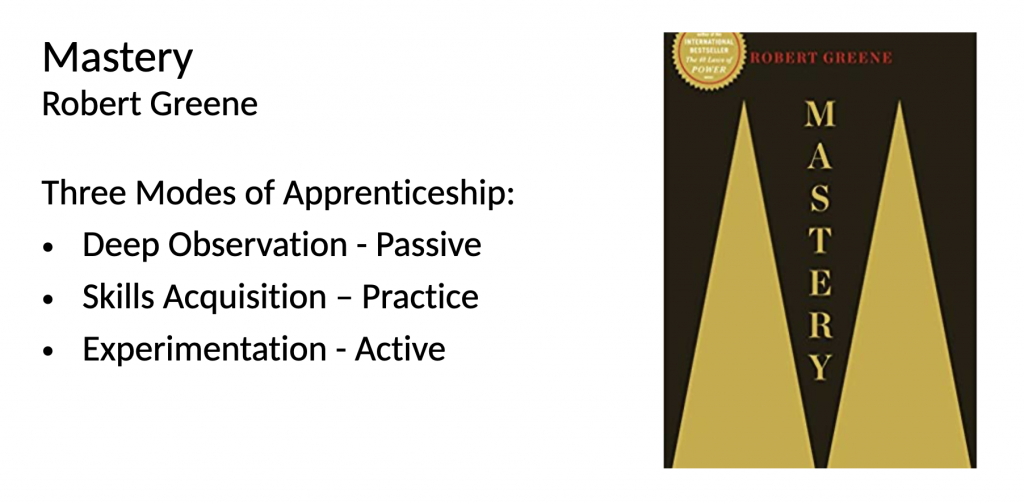
Apprenticeship is about deep learning of the skills of the master, the detail that sets them apart from journeymen, and the subtleties of technique that achieve this differentiation.
Copying and applying the techniques of multiple photographers, combining and applying these in novel ways is the basis of experimentation and, once done consistently, the development of a personal style.
Feedback from the Field
To know if one is making progress with one’s learning, it is essential to obtain reliable feedback.
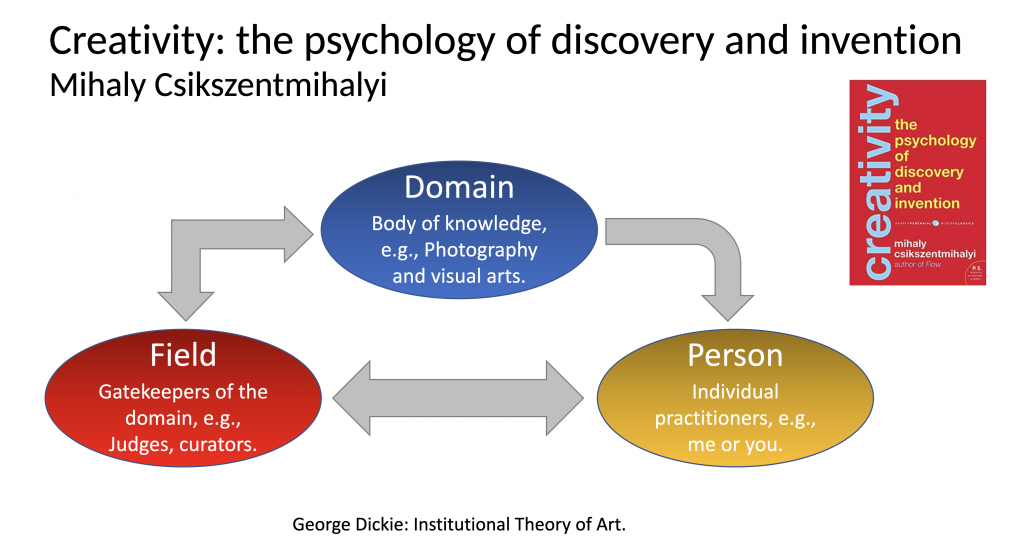
The above diagram, from Csikszentmihalyi, shows the mechanism of learning from expert feedback. The interacting parties are defined, in the context of my 10,000 hour photography project, as follows:
- Domain: Photography, particularly fine art photography, i.e., work that hangs on the wall of a home, office or art gallery. The extent of the Domain is the set of images and practices that are currently considered to be art
- Field: the group of people who determine if work in the Domain is any good, including competition judges, distinctions assessors from the Royal Photographic Society and elsewhere, and gallery owners and curators. (This is George Dicks’ Institutional Theory of Art that I discuss in my journal entry of 21st March 2019).
- Person: me, in my role as student of photography.
Mentors and Feedback
I am fortunate to have had the support and feedback from the following key people:
- Yin Wong – referred to widely in this journal as “my friend and mentor”, Expert Street Portraiture in particular and wide success across many genres in FIAP salons
- Vic Attfield – “Master of Photography” in every sense, doyen of the Amersham Photographic Society, and former head of Visual Arts distinctions for the Royal Photographic Society. I am grateful for several one-to-one conversations both in person and more recently by email and telephone
- Ray Brammall – help constructing my most recent CPAGB panel – lots of zoom and telephone meeting throughout the summer of 2020
- Karl Taylor – for commercial photography, feedback on images produced as part of the course. All entries for a challenge reviewed at once. So, with upwards of 150 submissions to review, feedback necessarily brief at 30-60 seconds per image. However, by avoiding repetition, as many comments apply to many submissions, the overall critique is very detailed.
- Amersham PIC Group (Steve Smith, Chris Palmer & Paul Mitchell) – particularly good at critiquing photo projects and potential panels. In fact, are officially recognised by the RPS for doing so; all three leaders of the group serve on RPS distinction panels. Feedback notoriously blunt.
- Members of the informal Amersham Colour and Mono groups both led by Laurie Turner. Monthly opportunity to present more speculative work, prior to competition. Supportive but honest.
Other feedback on individual images:
- Camera club competitions: I have recently taken over the role of external competition secretary for the Stoke Poges Photography Club; inter-club competitions are a good way of seeing a number of quality images from other clubs in my region
- FIAP Salons: a 5 second assessment by a number of experts for an “acceptance”, longer if considered for an “award” – an effective way of judging the standard of an image at an international level
- Social Media: despite a recent blip of enthusiasm when writing my “Managing Social Media” post I have not spent a lot of time on this. Feedback is generally not from people I would recognise as “Experts”; I am worried about it becoming an overwhelming distraction; and I am out of the habit of doing so.
Results
Unforeseen Challenges
From March 2020 to the date of writing (March 2021) the UK has imposed some level of Coronavirus “Lockdown” restrictions. For me this has meant no international travel and severely limited domestic travel. For most of that time, travel into central London would have been a clear violation of rules. So the project of urban multiple exposures, that I had been working on in 2019, had to be abandoned.
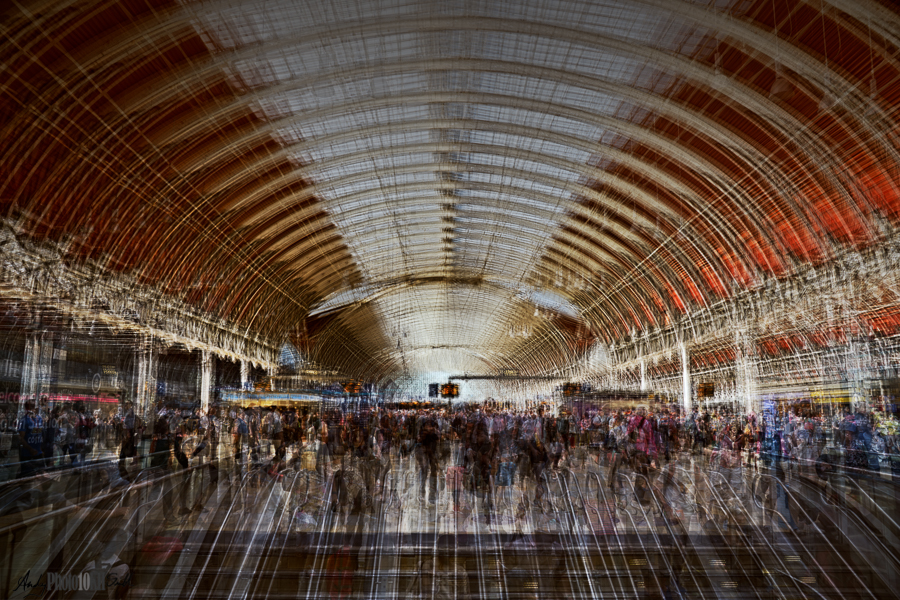
Project discontinued due to the pandemic.
However, this was only one year out of three and a half; I travelled widely for the first two months of last year (Patagonia, Easter Island and Jamaica); and I have photographic opportunities on my doorstep in Stoke Poges. New project: Trees of Stoke Common.
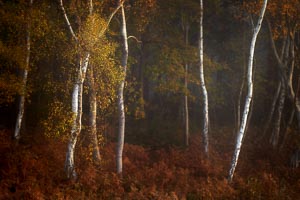
shot at Stoke Common on 5th November 2020
Time Spent by Activity Category
The following chart shows the breakdown of the first 5,000 hours of this project by activity category.
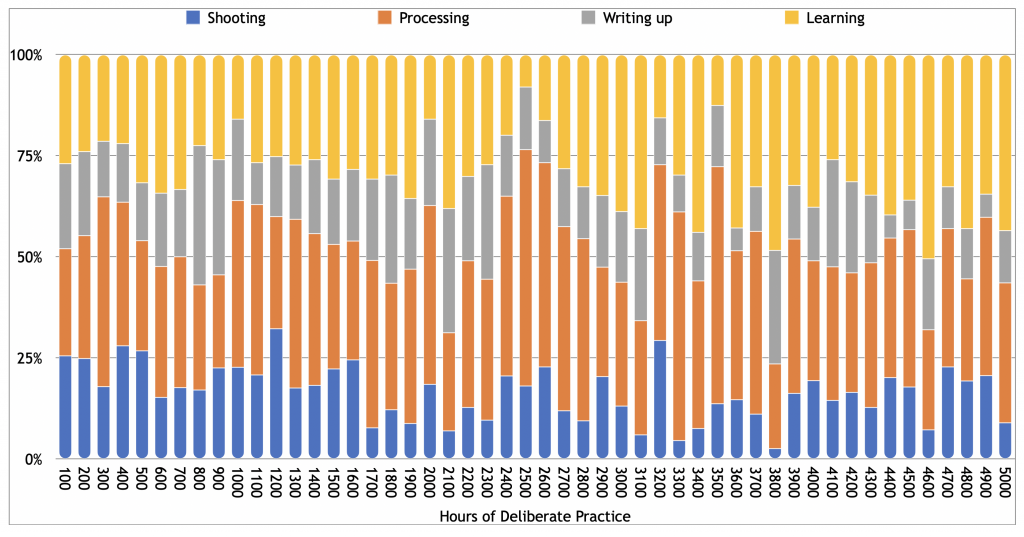
Averages and trends:
- Shooting: 17% – decreasing
- Processing: 36% – constant
- Review: 17% – decreasing
- Learning: 30% – increasing.
These categories of activity were defined at the start of the project with no specific expectation that I would divide my time equally, 25% on each of them.
Qualitatively, I feel that much of my work is now more directed. At the start of this project a photo session would typically involve traveling to a location and spending no more than an hour shooting whatever was in front of me; and I would do this pretty much every day. Now, I’m more directed, I tend to have at least some idea of what I’m going to shoot and how I’m going to do it. Sessions often last for more than an hour, if going well, and occur less frequently, maybe two or three times per week.
Photographic Distinctions
LRPS: first failed on 2nd October 2018 (see “Failed LRPS Submission“) , then reworked with lots of help from the Amersham PIC group, resubmitted and passed in March 2019 (“My Successful LRPS Resubmission“). Moving from individual images to creating a cohesive panel was the biggest challenge.
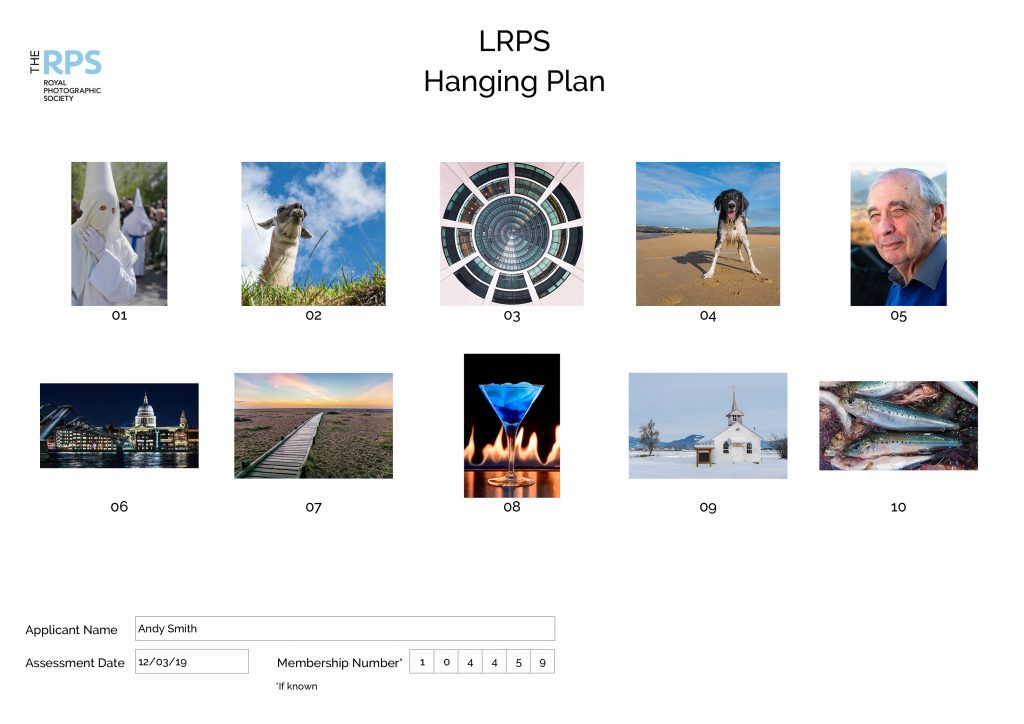
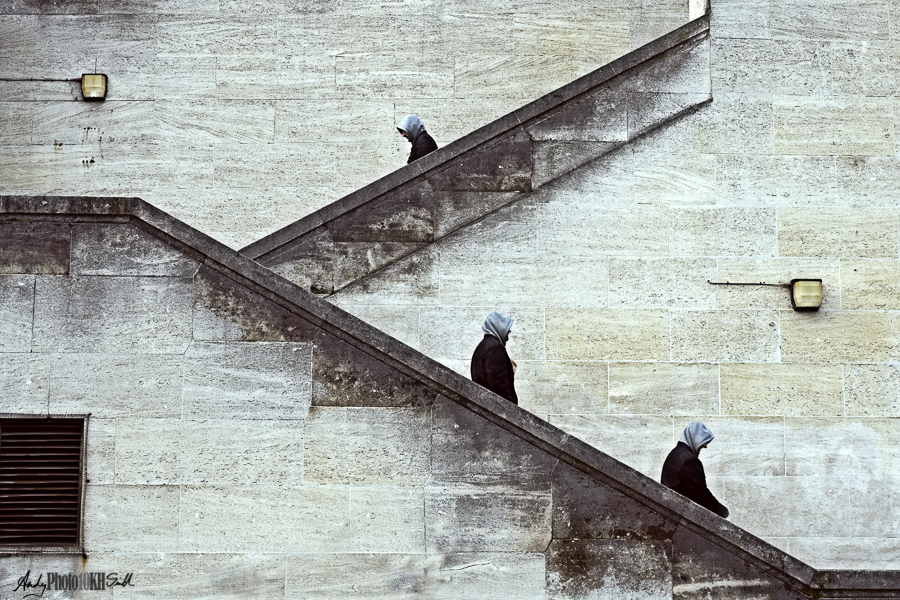
AFIAP: this distinction is about collecting “Acceptances” in FIAP recognised salons on an international basis. I have sufficient points and as far as I can tell, I have fulfilled the criteria so should received this award in June this year.
Image to the left, “Hoodie Descending a Staircase” is my most successful to date in terms of both acceptances and awards.
CPAGB: 23rd November 2019, dramatically failed (see: “My Failed CPAGB Submission“). However, throughout the summer of 2020, I spend a lot of time in zoom meetings with my PAGB appointed advisor, Ray Brammall ARPS DPAGB APAGB EFIAPb BPE3 which was enormously helpful and very enjoyable. The Coronavirus pandemic has delayed resubmission, but I have a revised panel boxed up and ready to go.
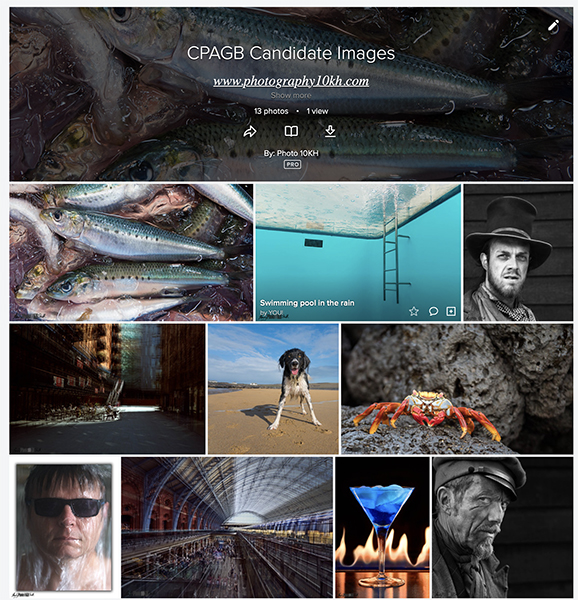
Currently working hard on an RPS Associateship panel on the trees of Stoke Common. Current draft below:
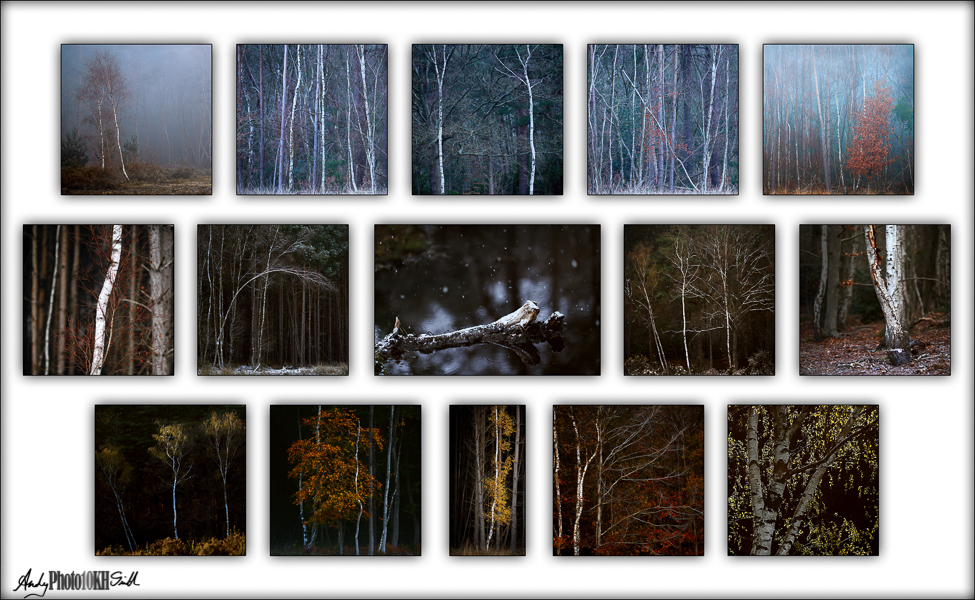
Top Photos
Best photos as judged by me. Some did well in competition, other not so much but are still my favourites.
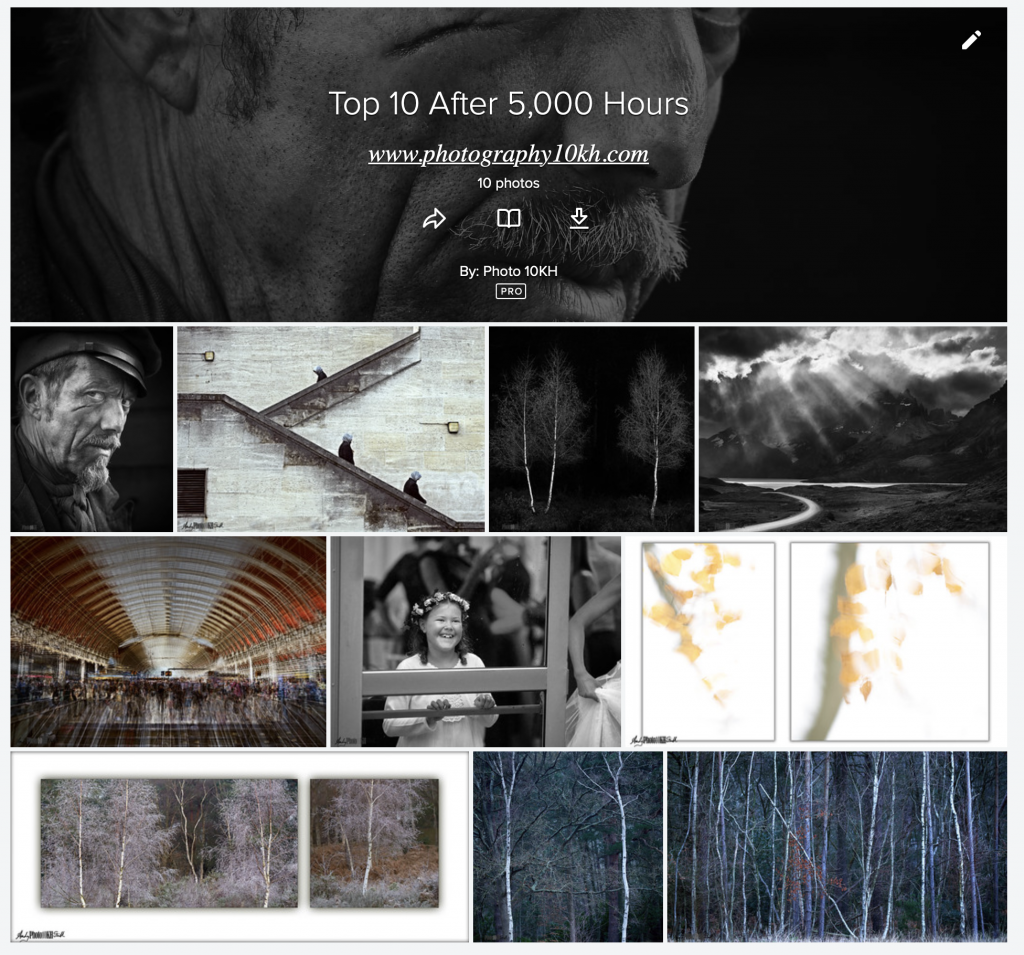
Interest and Experience by Genre
The following table shows my current interest and experience for types of photography I identified as the most important in my “At Zero Hours” post, where a similar chart is presented.
| No/ Little Experience | Some Experience | |
| Much Interest | Portrait HDR Experimental Architecture | Abstract Black and White Landscape Street (+Street portraiture) Still life (inc. product) Travel |
| Less Interest | Fashion Aerial Contemporary Documentary Photojournalism | Advertising/ Commercial Nature/ Wildlife Sports Wedding/ Event |
Style Development
A recognisable style is the result of a consistent workflow both in-camera and post processing.
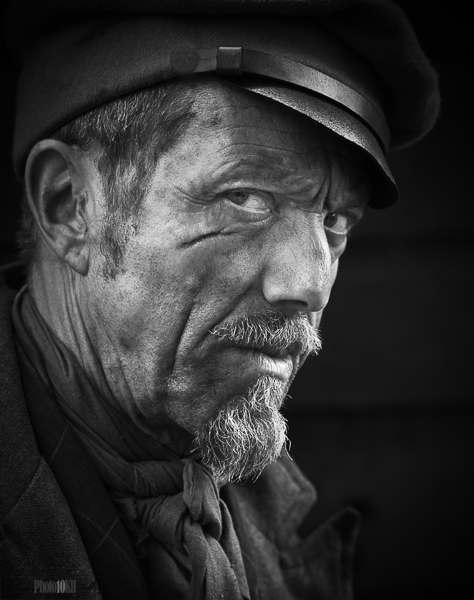
I have jumped about a lot over the last 5,000 hours; experimenting with many different techniques and trying out many “looks”. If I enter 4 photographs into a competition, they often look as though they were taken by 4 different photographers. I’m happy with this as an essential part of the learning process.
“The Scowl” left has been successful for me, but is not my standard style of photography.
However, for a RPS Associate panel, consistency is critical. I have taken some steps towards this by automating some of my post processing habits as Photoshop Actions. This proves both efficiency and consistency.
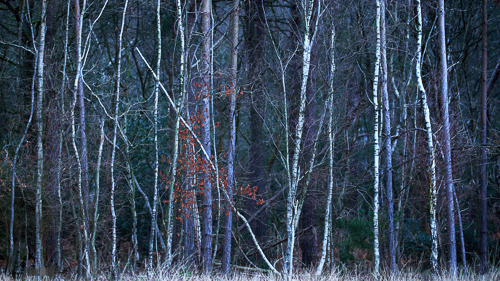
Potential image for my Woodland A Panel
Technical Skills
Camera Handling
Shooting Modes
When I’m doing landscape photography, studio work, and most of the time in fact, I’m shooting with manual exposure, colour balance and either manual or single-shot point auto-focus. OK, unless I quickly need to do something different. Switching to Auto is an option for a “grab shot”, but is sub-optimal in many respects. So, on 25th January 2019 (revised on 16th April 2020) I set up my camera’s memory setting to appropriate shooting modes for street portraits, action shots and ICM.
Shooting Tethered
Any product or portrait photography is now shot tethered to Capture One, see “Tethered Workflow using Capture One Pro (Sony)“; now a very comfortable way to work.
The Apple Earphones, right were shot tethered for a Karl Taylor Education challenge. Reviewed 18th February 2021.
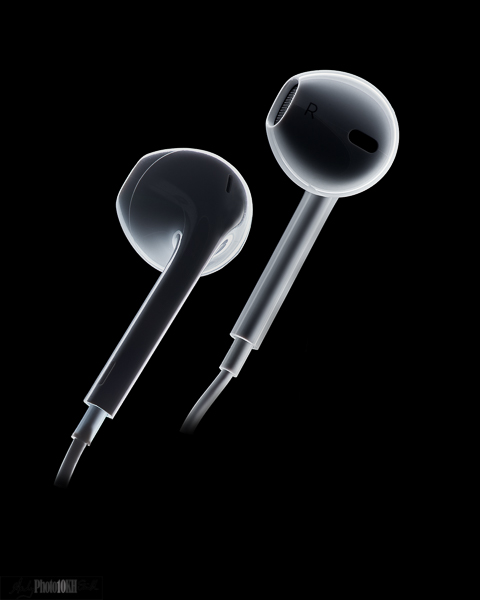
I’m usually tethered to my 13″ MacBook Pro, but the self-portrait at the top of this post was shot tethered directly into the Mac desktop I was sitting in front of.
Macro Photography
A 100mm f/2.8 macro is the only lens I have bought in the last 3½ years, I’m still using the same camera. This works well when manually focussed, and the Godox ring-flash is a good complement providing the all round illumination essential when shooting with the small apertures required to get any depth of focus in a macro shot.
Also adopted is the Zerene Stacker software as recommended by the master of macro photography, Andy Sands, of Chiswick Cameras.
Prominent Weaknesses
Back Button focusing and use of eye-focus, which apparently my camera does very well. Little opportunity to practice this over the last year.
Lighting
Understanding studio lighting has been helped by my involvement with the the Karl Taylor Education on-line programme that I “accidentally” got enrolled in as a result of my residential course with Tim Flack having been cancelled due to pandemic restrictions.
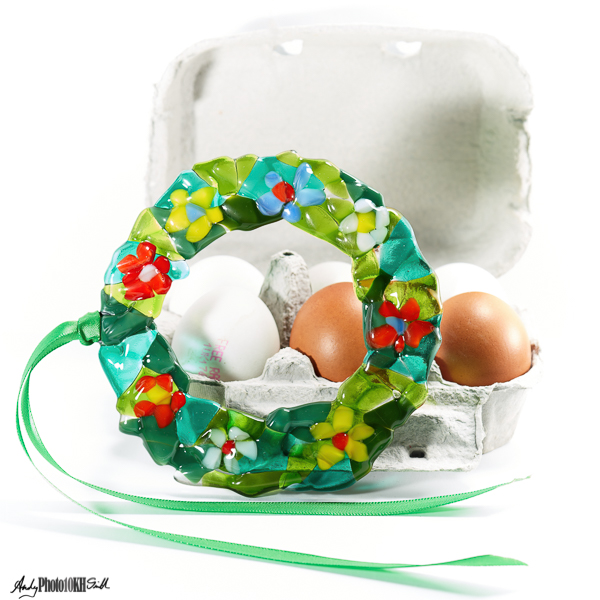
Key elements include:
- first consider lighting the back of the set, add lights to illuminate the subject as required, then finally refine by adding lights for emphasis or to fill in unwanted shadows
- predominantly back (or side) lighting generally best emphasises the form of an object
- using hard and soft light to emphasise glossiness of surface and form (3D shape of the subject)
- graduated lighting using large 30×120 softboxes illuminating a scrim
- “pop” light into shadow areas and perhaps blend using photoshop
- Rembrandt lighting: triangle of light on the cheek of the shadow side of the face, generally a good starting point for portraits.
Post Processing
This is an area I claimed as a strength when starting this project. My claim to have been a “Black belt at Photoshop“, when I started this project, turns out to have been more a demonstration that I didn’t know how much I didn’t know. At 5,000 hours, I claim merely that I know a lot more than I did at zero hours. Some details below.
Capture One
When I started this project I did all my RAW conversion and initial processing in Lightroom (see early post “Post-Processing Workflow“). However, due to Lightroom’s poor support for Sony cameras, particularly in tethered shooting, I made the move to Capture One, which I adopted in April 2018 (see “My Introduction to Capture One Pro Sony 11“). I still use Lightroom, but only for storage and categorisation (see “Second Revision: Workflow at 2,000 Hours“).
Actions, Batch Mode and Droplets
I have saved a lot of time and added consistency to my style by making extensive use of Photoshop Actions. My favourite action, out of those I have written, is “PDI Comp Prep MASTER” which takes any image file and resizes it automatically to within the competition limit sized and adds a 50% grey keyline. Dealing with different aspect ratios was the tricky thing, see notes: 19th June 2020.
Wacom Tablet
The Wacom tablet has many advantages in that pen pressure can be used to control opacity and flow during photo editing. I use this exclusively on my main computer, the very clever MacMouse is redundant and lives in my desk drawer.
I do not use the buttons on the tablet.
Photoshop: Pen Tool, Paths and Selections
Although I’m now using these techniques on an almost daily basis, they are still on the edge of my comfort zone. I feel there are more tricks to learn.
“First Light Silver Birch”, right, was shot in natural light very early in the morning and needed quite a bit of help in photoshop to reach its current state.
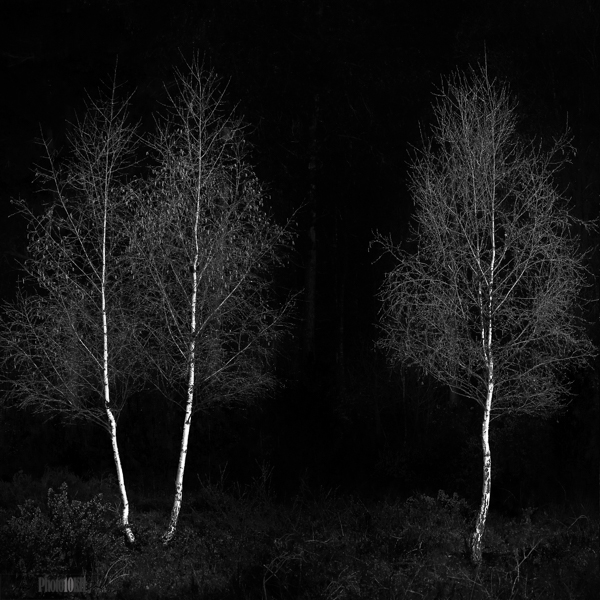
Move from PC to Mac
Have now adopted a completely Apple based operating environment with a 27″ iMac (great 5K screen) and a little 13″ MacBook Pro for shooting tethered or general portability.
Art Appreciation
Since starting this project, I am familiar with the work of many more photographers, painters and other visual artists.
My post, “Top 100 Photographers of All Time” shows how much progress I made in the first 16 months of this project, but is now sorely out-of-date.
The beginning and end of all Artistic activity is the reproduction of the world that surrounds me by the means of the world that is in me, all things being grasped, related, recreated, moulded and reconstructed in a personal form and an original manner.”
Johann von Goethe – adapted and carried with him always by Edward Hopper (my notes: 22nd March 2021).
Conclusion
I was introduced to Jungian philosophy through Sean Tucker’s “The two halves of your creative journey” vlog post. According to Jung, the first half of the path to mastery is characterised by learning widely and experimenting with many different techniques. This is definitely where I have been, and perhaps still am. The half way point is typically a point of dissatisfaction where one feels one has not achieved as much as one should have. The final half is characterised by greater openness and honesty as one concentrates in a particular area and forgets much that is less relevant.
| Things that worked 0-5,000 | Less successful 0-5,000 | |
| 1. Joining the Amersham Photographic Society and working with the members 2. Mentorship from Yin Wong, including his introduction to others 3. Learning many new techniques and photography genres 4. Doing my Licentiateship panel | ….. | 1. Poor initial CPAGB submission 2. I have an overly complicated workflow involving CaptureOne, Lightroom and Photoshop |
| Opportunities 5,000-10,000 | Risks 5,000-10,000 | |
| 1. Learn further professional level skills through Tim Flack/ Karl Taylor course 2. Keep it fun with: – travel to Africa and elsewhere – festivals, steampunk, comicom, etc. – documentary, protests, etc. – further street photography. 3. learn more about art, particularly abstract art 4. single minded determination to achieve the next level of RPS distinction. | 1. losing enthusiasm 2. conflict in strategies required for RPS vs other distinctions. |
Hours 5,001-10,000
Aspirations for Distinctions
A Fellowship of the Royal Photographic Society (FRPS) would be an undisputed acknowledgement of Mastery. This is a stretch goal and may well be unrealistic. First I must obtain my ARPS, my current top priority.
An EFIAP distinction is within my reach as this is based on number of acceptances in international salons, and I’m well on my way.
I am reasonably confident of my chances with my current CPAGB submission. So within the next 5,000 working hours a DPAGB submission must be realistic.
The RPS distinctions scare me the most.
Changes in Learning Strategy
According to Jungian philosophy, introduced at the start of this Conclusion, now is the time to start concentrating my efforts in a more narrowly defined area of photography. This is certainly a requirement for projects related to RPS distinction.
However, I believe in cross fertilisation between genres of art; between painting and photography. Whilst I have no intention of taking up painting, I do want to continue to shoot as broadly as possible.
To advance my overall art knowledge, I need to learn more about currently practicing contemporary artists, and identify and get closer to the top photographers currently working in the UK and elsewhere.
Notes:
Recent posts:
Related posts:
- At Zero Hours
- After 100 Hours
- After 250 Hours
- After 500 Hours
- After 1,000 Hours
- The First 2,500 Hours – Review at 25%
- Time Analysis at 3,000 Hours
- The First 4,000 Hours – Review at 40%
- Half Way – After 5,000 Hours
- Two Thirds of an Expert Photographer
- After 8,000 Hours – 80% Review
- After 9,000 Hours – 90% Review
- Goal Achieved – Final Review